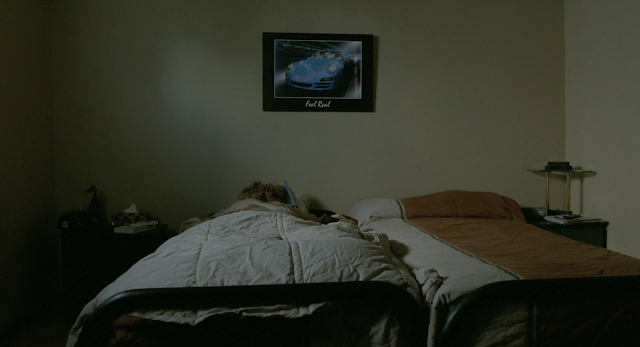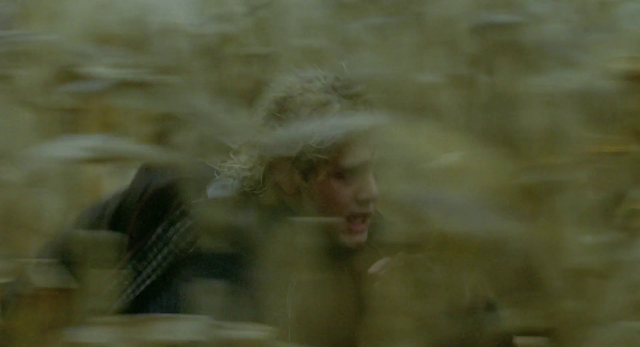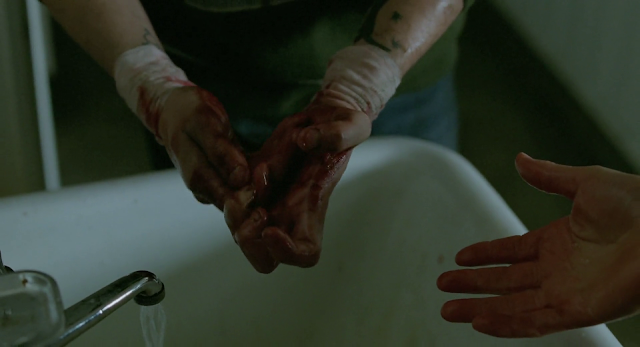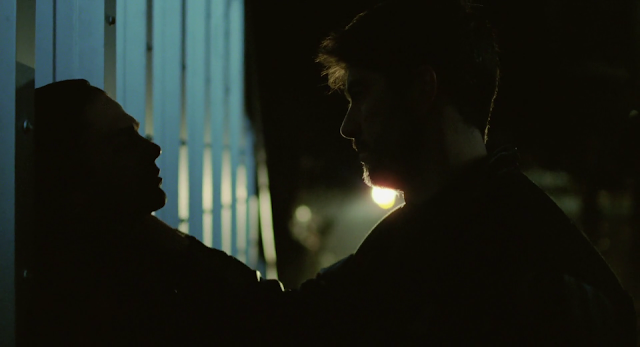The two images above offer a snapshot of the stylistic differences one can come to expect from Xavier Dolan’s attempt at stripping down his aesthetics to suit the text surrounding his queer thriller, Tom at the Farm. In Laurence Anyways and Mommy, Dolan’s style could be more easily associated with fashionable romanticism and blunt metaphorical imagery (especially in the case of Laurence). Tom operates on a different level; replacing the vibrancy of colours with muted browns, and grandiosity substituted for something more altogether minimal.
What is most fascinating about the sudden shift for Dolan is how it plays into how queerness operates on a metropolitan and regional level. In some ways, arriving in this small town, and in making this movie Dolan has closeted what has distinctly made him a remarkable filmmaker to date, and that is perhaps the greatest metaphor he could have offered in visualizing the differences between small town and metropolitan queerness in Canada. It doesn’t completely work, but it’s a fascinating idea. When push comes to shove Dolan can’t help, but overemphasize things. Aspect ratios shift, Tom’s (played by Dolan) hair matching the cornfield exactly as he sprints in a breath-taking sequence, and the karaoke flashback seems more appropriate in his previous films. The closet then, cannot hold Dolan, just like it cannot hold Tom.
From a form perspective Tom is perhaps Dolan’s greatest achievement, because it doesn’t falter nearly as frequently as his previous movies when matched up against the themes he wants to present. Tom is about sheltering queerness, and the danger of the closet. The violence present throughout the movie and threat of more violence is most present when Tom is confronted with his dead lovers (Tom is attending his lovers funeral) brother (Francis) who is doing the best he can to keep his brother’s bisexuality a secret from the other citizens of this small farming town. In a scene later on Tom is talking to a bartender who tells him about a time that Francis ripped another man’s mouth open for even bringing his brothers sexuality up. This is made even more interesting by the sense that Francis is also queer. There’s a real attraction between Tom and Francis that ponders the idea of this picture becoming closer to a persona/swap narrative than a thriller based around the reveal of queerness.
There are moments of softness between the two, like this moment where Francis helps Tom wash the blood off of his hands after helping deliver a baby calf. They share a dance together later on, and Tom even admits to wanting to stay at the farm house and help Francis run the place. Is this some attempt at delivering themes on stockholm syndrome or has he fallen in love with Francis because he reminds him of his dead lover? There, however lies the problem of Tom at the Farm, it’s too overstuffed, despite being an exercise in Dolan’s minimized style, to deliver on many of the ideas that are presented in the script.
The ultimate undoing is vagueness. Dolan has previously laid things on incredibly thick to get a point across. He does that in an incredibly beautiful way in Laurence Anyways, but when that is inverted into a chorus of maybes and almosts as it is here it feels like a betrayal. Perhaps, that is the ultimate point of Tom at the Farm and why the eventual ending feels closer to relief rather than catharsis, but it feels unsatisfying to leave so many of these ideas about internalized homophobia, small town bigotry, and the parallel love/hate between Tom and Francis barely explored. Instead when Tom finally gets away he buries everything behind him. He’ll never fully understand this week, and we won’t either.







Be First to Comment